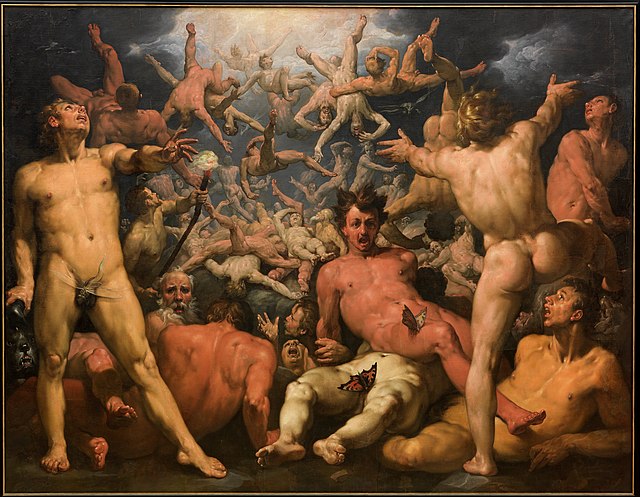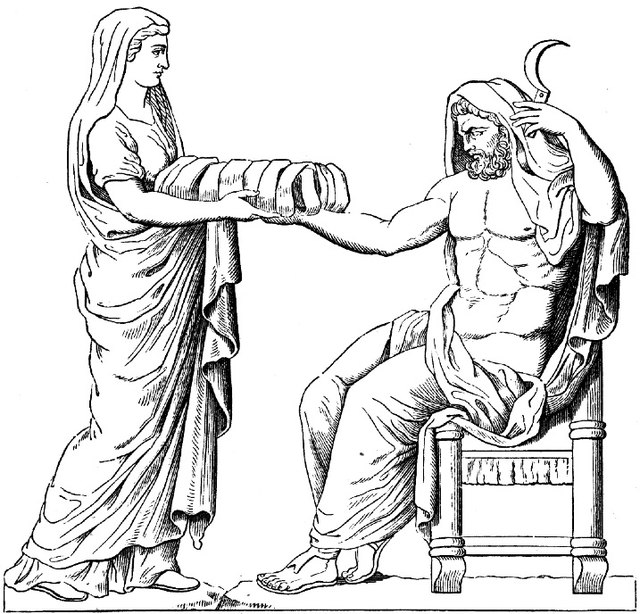In Greek mythology, Atlas is a Titan condemned to hold up the heavens or sky for eternity after the Titanomachy. Atlas also plays a role in the myths of two of the greatest Greek heroes: Heracles and Perseus. According to the ancient Greek poet Hesiod, Atlas stood at the ends of the earth in the extreme west. Later, he became commonly identified with the Atlas Mountains in northwest Africa and was said to be the first King of Mauretania. Atlas was said to have been skilled in philosophy, mathematics, and astronomy. In antiquity, he was credited with inventing the first celestial sphere. In some texts, he is even credited with the invention of astronomy itself.
The Farnese Atlas, the oldest surviving depiction of the celestial spheres.
Atlas and the Hesperides by John Singer Sargent (1925)
Herkules und Atlas by Lucas Cranach the Elder
Atlas and Heracles, metope from the temple of Zeus at Olympia.
In Greek mythology, the Titans were the pre-Olympian gods. According to the Theogony of Hesiod, they were the twelve children of the primordial parents Uranus (Sky) and Gaia (Earth), with six male Titans—Oceanus, Coeus, Crius, Hyperion, Iapetus, and Cronus—and six female Titans, called the Titanides or Titanesses—Theia, Rhea, Themis, Mnemosyne, Phoebe, and Tethys. Cronus mated with his older sister Rhea, who then bore the first generation of Olympians: the six siblings Zeus, Hades, Poseidon, Hestia, Demeter, and Hera. Certain descendants of the Titans, such as Prometheus, Atlas, Helios, and Leto, are sometimes also called Titans.
The Fall of the Titans by Cornelis Cornelisz van Haarlem (1596–1598)
The Mutilation of Uranus by Saturn: fresco by Giorgio Vasari and Cristofano Gherardi, c. 1560 (Sala di Cosimo I, Palazzo Vecchio)
Rhea presenting Cronus the stone wrapped in cloth
"Fall of the Titans". Oil on canvas by Jacob Jordaens, 1638.








